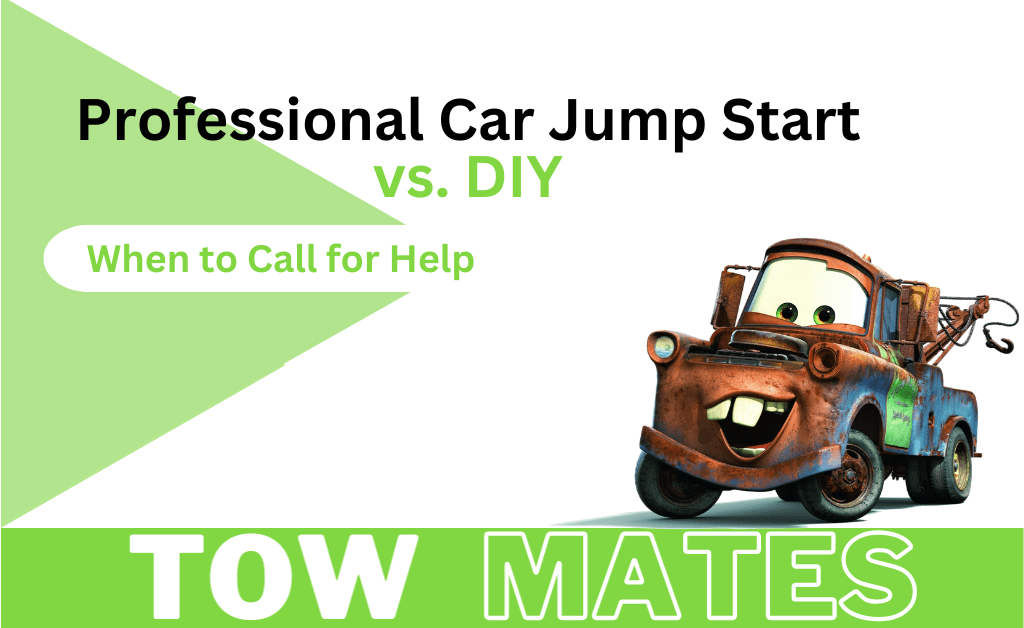A dead car battery can happen to anyone, and it’s always at the most inconvenient time. Whether you’re running late for work or stranded in a parking lot, knowing how to handle the situation is crucial. While a DIY jump start can often get you back on the road, there are times when calling for a professional car jump start is the smarter choice. In this article, we’ll explore the pros and cons of both options and help you decide when to grab the jumper cables and when to pick up the phone.
Understanding the Basics of a Jump Start
How Jump Starting Works
Jump-starting a car involves using jumper cables to connect your dead battery to a working battery in another vehicle. This transfers enough voltage to your battery to start the engine. Once the engine is running, the alternator recharges the battery.
Tools You’ll Need for a DIY Jump Start
- Jumper cables
- A working car with a charged battery
- Safety gloves and goggles
- Flashlight (for low-light situations)
When to Attempt a DIY Jump Start
Ideal Conditions for DIY
- You Have the Right Tools: If you have jumper cables and access to another vehicle, a DIY jump start is often quick and effective.
- The Battery is Accessible: If your car’s battery is easy to reach and not corroded, you can safely attempt a jump start.
- You’re in a Safe Location: If you’re in a well-lit area with minimal traffic, DIY is a practical option.
Step-by-Step DIY Jump Start Guide
- Position the Cars: Park the working car close to the dead car, but ensure they don’t touch.
- Connect the Cables: Attach the red clamp to the positive terminal of the dead battery and the other red clamp to the positive terminal of the working battery. Then, connect the black clamp to the negative terminal of the working battery and the other black clamp to an unpainted metal surface on the dead car.
- Start the Working Car: Let it run for a few minutes to charge the dead battery.
- Start the Dead Car: Try starting the car with the dead battery. If it starts, let both cars run for a few minutes before disconnecting the cables.
When to Call for a Professional Car Jump Start
Situations Where DIY Isn’t Enough
- You Don’t Have the Tools: If you don’t have jumper cables or a second vehicle, calling a professional is your best bet.
- The Battery is Damaged: If the battery is swollen, leaking, or cracked, attempting a jump start could be dangerous.
- You’re Unsure About the Process: If you’re not confident in your ability to safely connect the cables, it’s better to leave it to the experts.
- The Car Still Won’t Start: If you’ve tried jump-starting multiple times without success, there may be a deeper issue that requires professional attention.
Benefits of a Professional Car Jump Start
- Expertise: Professionals know how to handle different types of vehicles, including trucks and diesel engines.
- Safety: They have the right equipment and training to avoid accidents or damage to your car.
- Convenience: A professional service can come to your location, saving you time and effort.
Risks of DIY Jump Starting
Common Mistakes to Avoid
- Incorrect Cable Connections: Reversing the cables can cause sparks or damage the electrical system.
- Ignoring Corrosion: Corroded terminals can reduce efficiency and make the process harder.
- Overlooking Safety Gear: Always wear gloves and goggles to protect yourself from sparks or battery acid.
Potential Damage to Your Vehicle
Improper jump starting can damage your car’s electrical system, alternator, or even the battery itself. In some cases, it can also void your warranty.
How to Choose the Right Professional Service
What to Look For
- 24/7 Availability: Dead batteries don’t wait for business hours. Choose a service that’s available around the clock.
- Positive Reviews: Check online reviews to ensure the company is reliable and trustworthy.
- Fair Pricing: Compare rates to avoid overpaying for the service.
Questions to Ask
- Do you service my type of vehicle (e.g., trucks, diesel engines)?
- How quickly can you arrive at my location?
- Do you offer additional services like battery replacement or towing?
Final Thoughts
While a DIY jump start can be a quick fix, it’s not always the safest or most effective solution. Understanding when to call for a professional car jump start can save you time, money, and stress. Keep jumper cables in your car for emergencies, but don’t hesitate to call for help when the situation calls for it.

